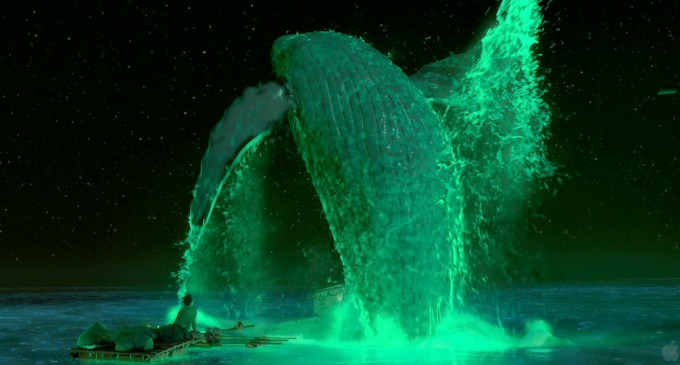‘Life of Pi’ a gorgeous adventure at sea
-
Of the big questions raised in “Life of Pi,” there is at least one definitive answer: You can’t be friends with a Bengal tiger.
Director Ang Lee (“Brokeback Mountain”) has done what many thought impossible. He’s crafted a thrilling and visually spectacular adventure film out of Yann Martel’s unconventional bestseller.
Lee and screenwriter David Magee frame the flashback-heavy opening act with a reporter (Rafe Spall) interviewing an adult Pi Patel (Irffan Khan), who as a boy was the sole survivor of a shipwreck and 227 grueling days in a lifeboat at sea.
Pi tells stories of his spiritual curiosity as a boy, raised Hindu but also adopting Christianity and Islam. His parents operate a zoo in India, until Pi’s father decides to sell the animals and move the family to Canada.
“Life of Pi” drops adult Pi’s narration once the family boards the freighter ship to Canada. The teenage Pi (Suraj Sharma) awakens during a violent storm and is separated from his family as the ship capsizes. Free of the narrative constraints of the opening, Lee crafts a terrifying sequence as Pi narrowly escapes in a lifeboat when the ship goes down.
Pi isn’t alone on the lifeboat though. An injured zebra, orangutan, hyena and a Bengal tiger the family named “Richard Parker” are also aboard the modest-sized craft.
Those unfamiliar with the story should know “Life of Pi” is not some cutesy story of a boy living with animals on a boat. It isn’t long before only Pi and Richard Parker are left alive, and sharing a boat with a hungry predator isn’t exactly an ideal situation.
The story that follows is a visual feast, with Pi encountering wildlife, unruly seas and an out-of-this-world island populated by an army of meerkats. Lee paints the film with images that could fill a museum, but his most accomplished creation is Richard Parker, a seamless combination of live-action and computer generated effects. Even while spectacular events happen around them, there’s never a moment where Pi and the tiger don’t convincingly occupy the same space.
The final act of the movie dives into deep spiritual territory, and Lee handles these moments with subtlety, helped along by a terrific performance by Sharma as the teenage Pi. The framing material with the reporter and adult Pi don’t captivate quite like the middle act at sea, but Lee manages to hit the major themes of the story without pandering to any one specific interpretation.
One clear conclusion: Even after you’ve cared for a tiger – providing food, water and living space in even the direst conditions – that tiger will still bite your face off. To survive such a thing would be a miracle by God, or simply a ludicrous piece of fiction. And so it goes with “Life of Pi.”
Grade: A-
